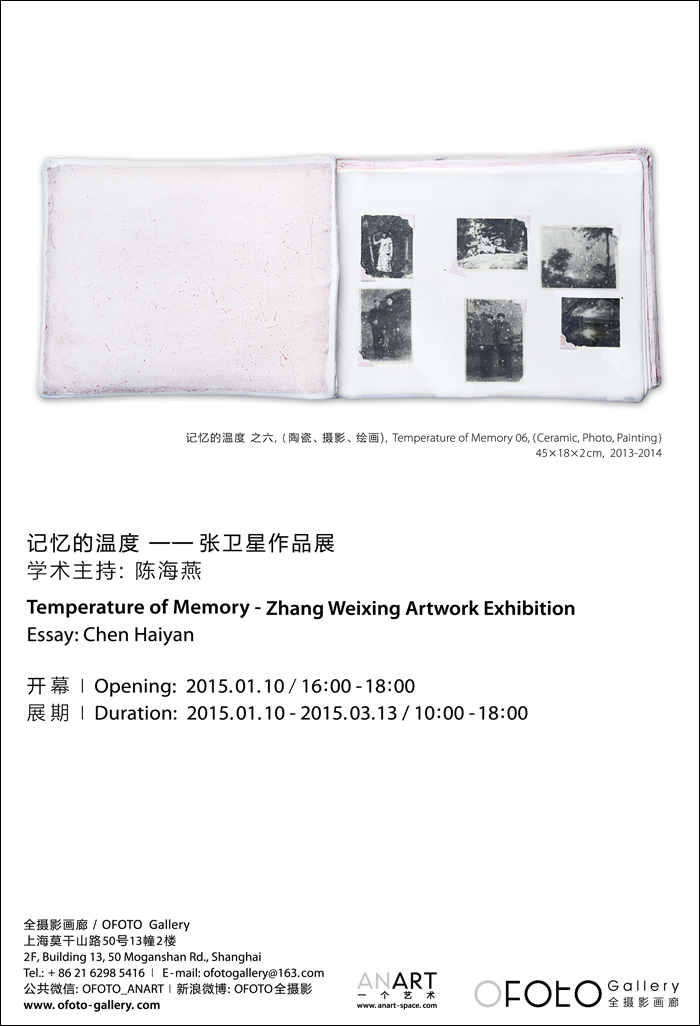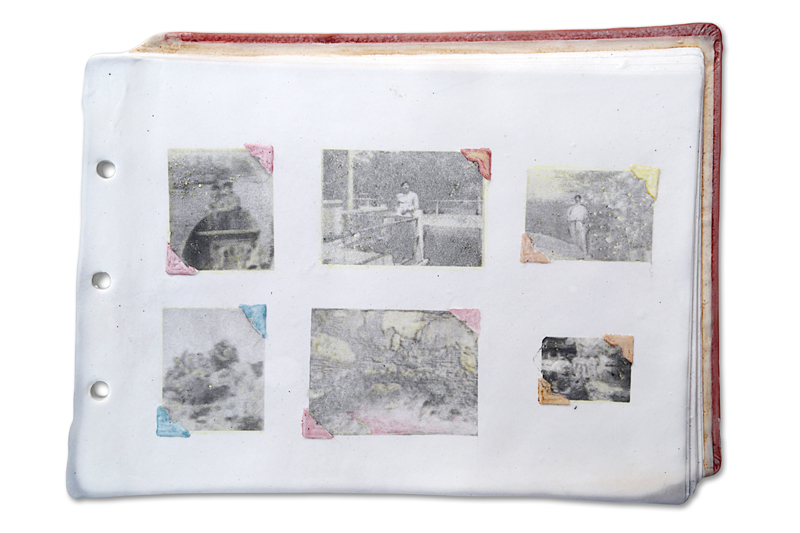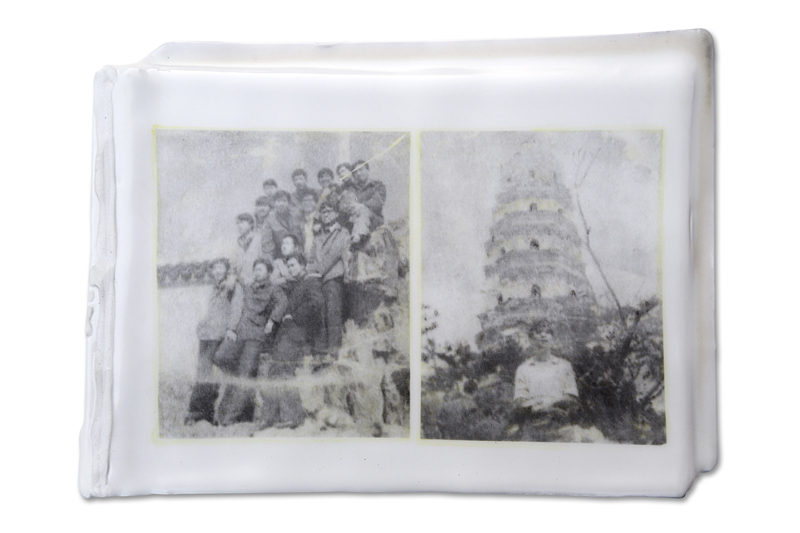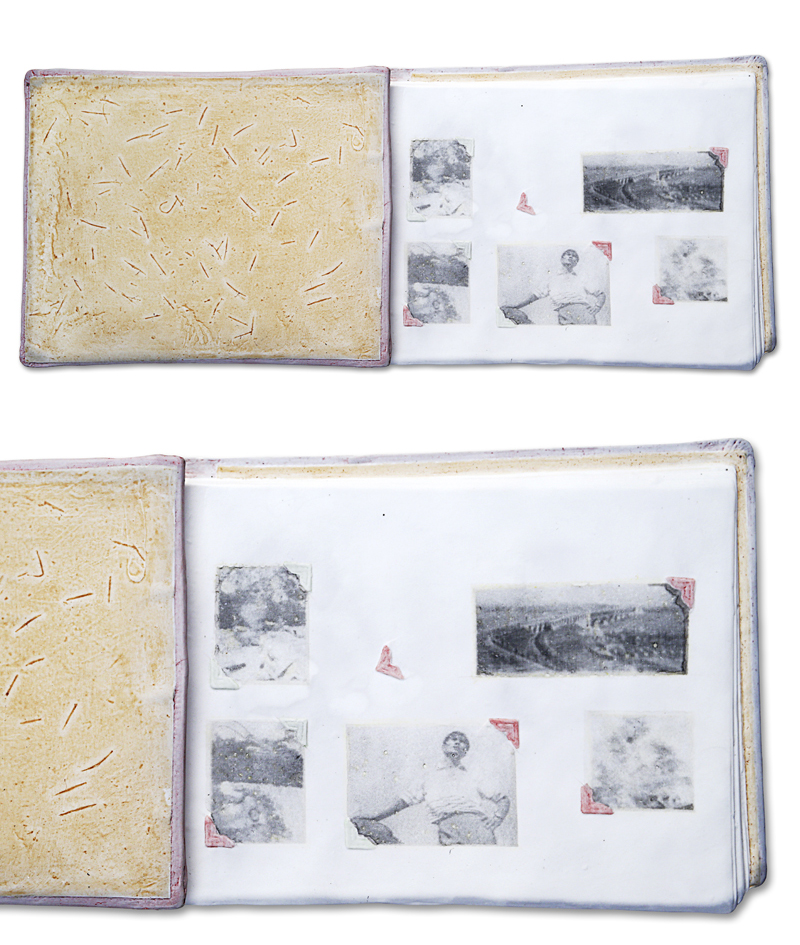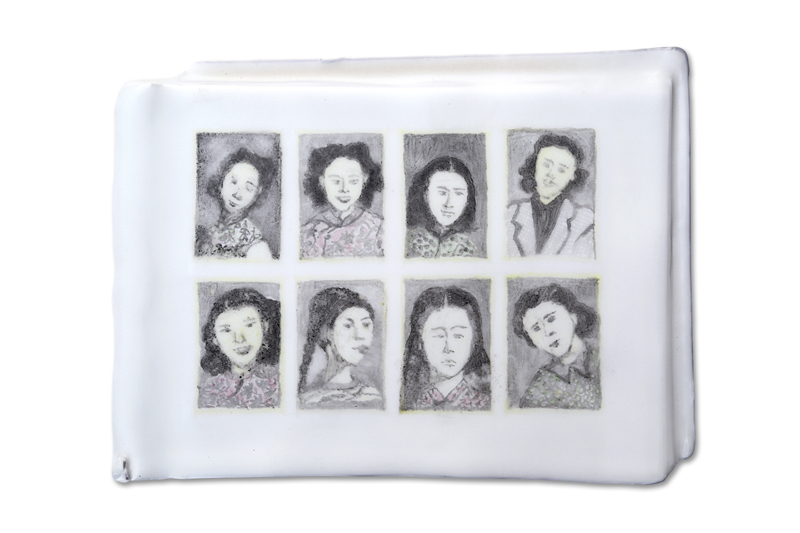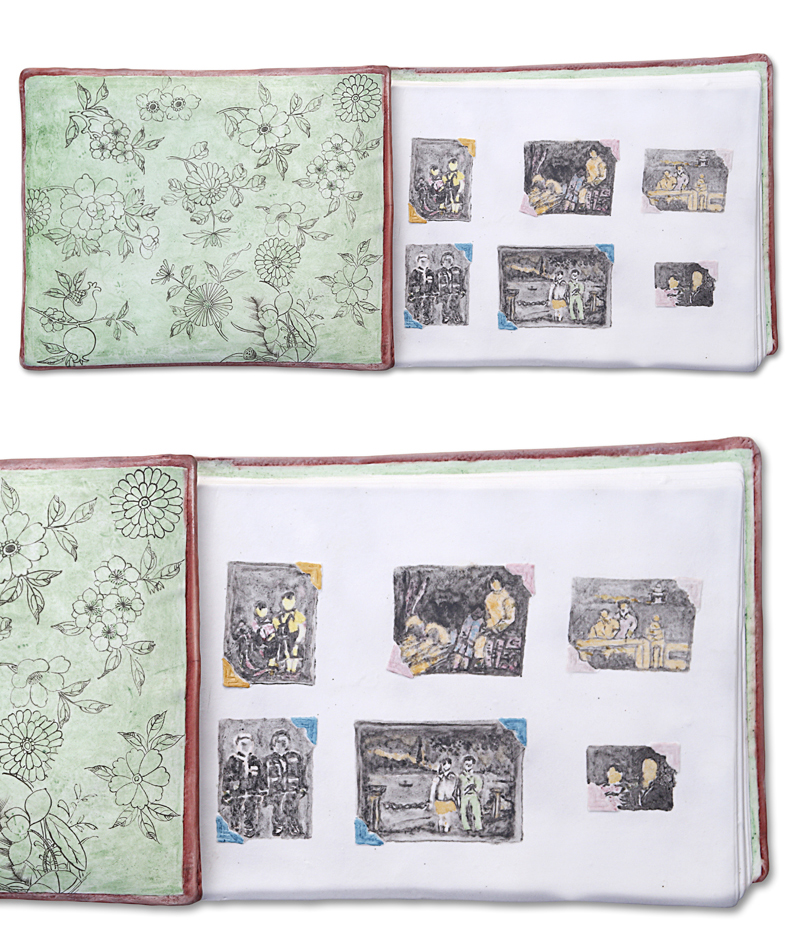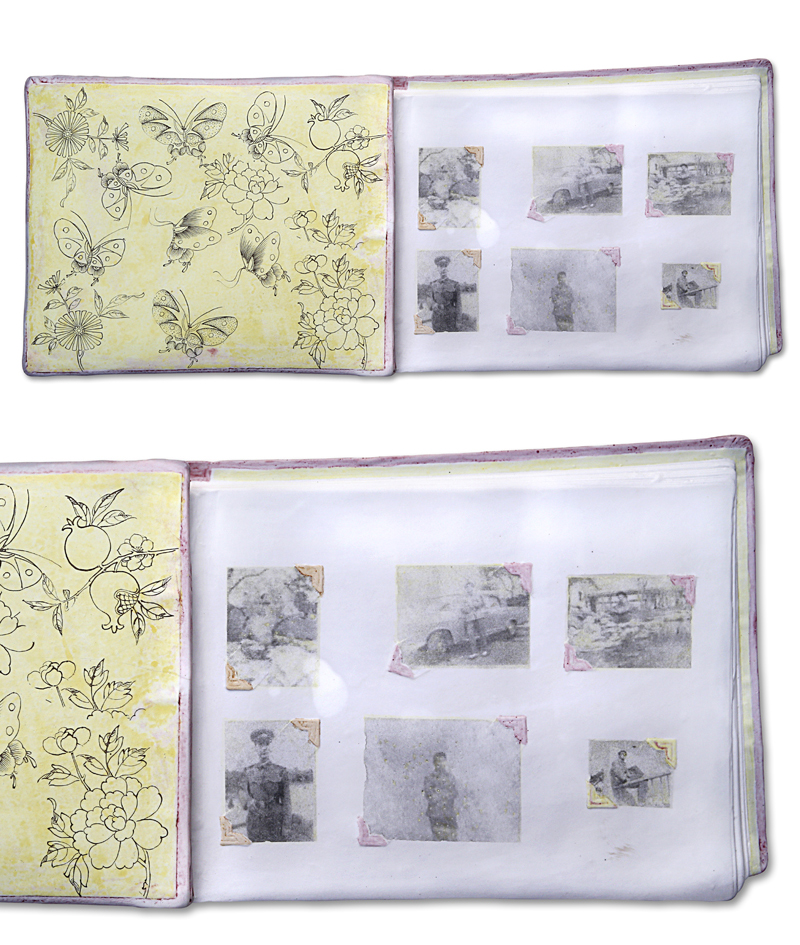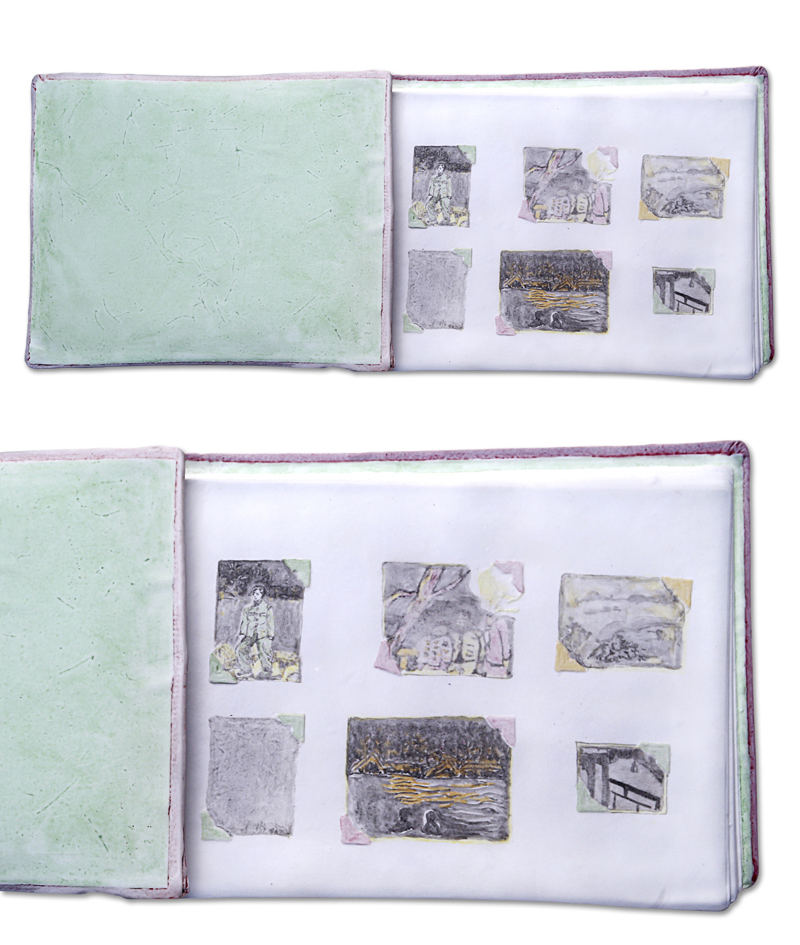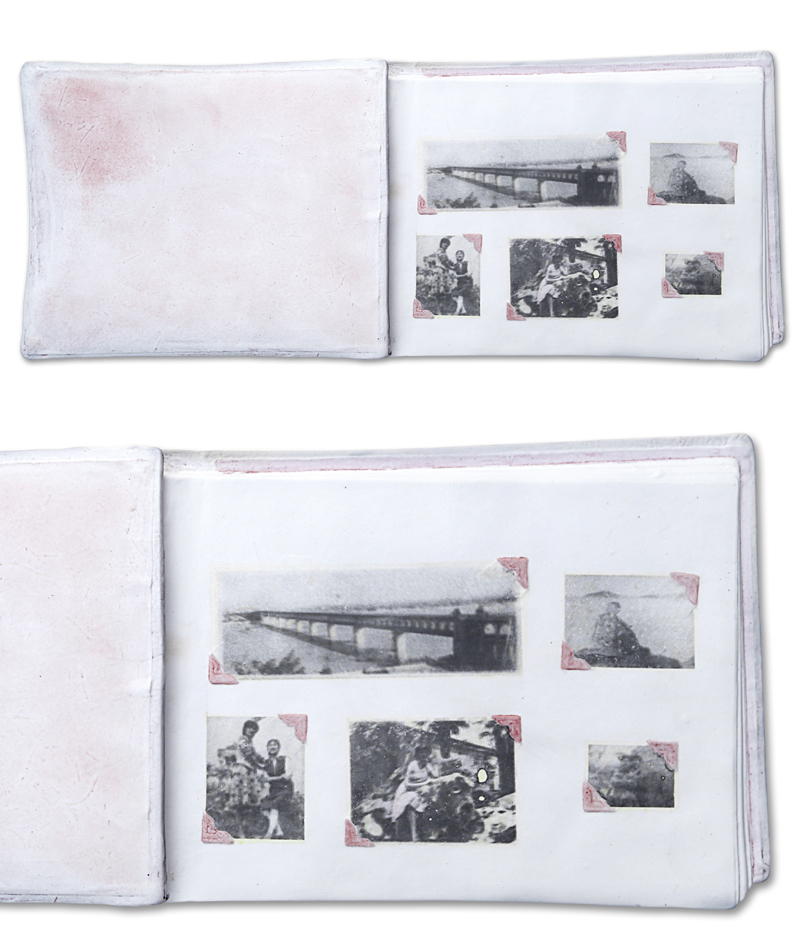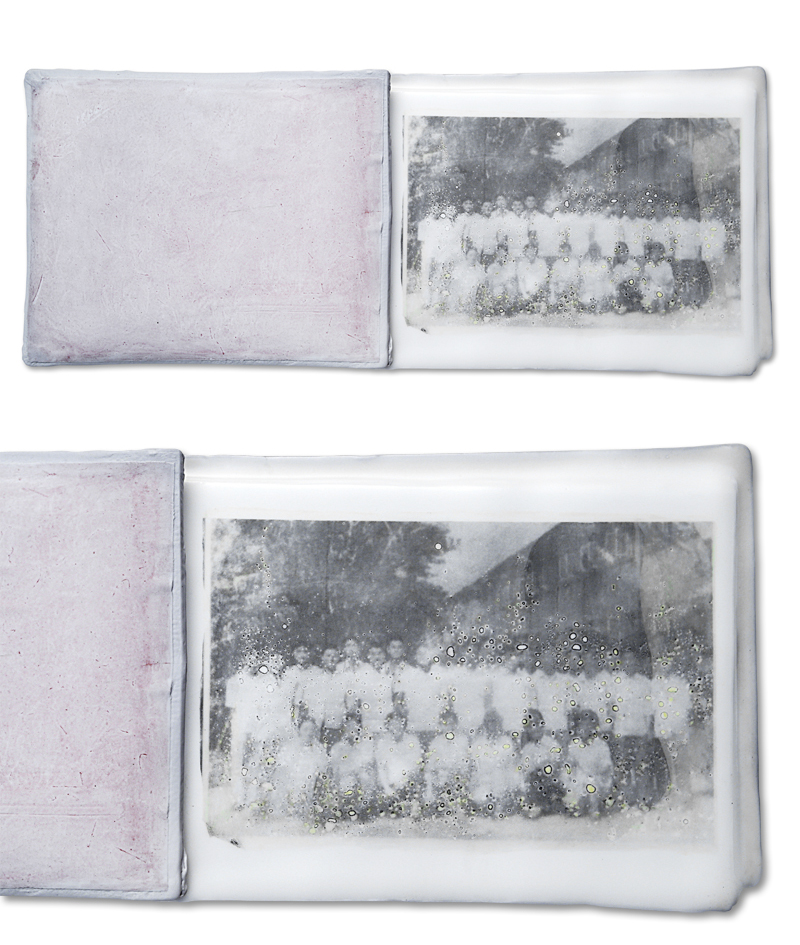Temperature of Memory
Essay: Chen Haiyan
Zhang Weixing has found fun with ceramics for many years. Like a rabbit with numerous hideouts, he has a den in Jingdezhen, a house in Zhenzhou, and a workshop and a courtyard in Songshan. According to his own words, he hopes to acquire different inspirations from the natural conditions and social customs of different places. However, different from other ceramic artists, he insists on his identity of photography artist. Such insistence makes him walk between photography and ceramics, seeking a new language from the two totally different art forms. Weixing has experimented a lot of trials and efforts on how to weld the two and break through, sowing and reaping new species in the soil of deep thought. This series is only one of the subjects among many transboundary experimental art works. American photography artist Man Ray once said: “I photograph what I don’t want to paint; I paint what I can’t photograph.” If Weixing makes a sentence imitating those words, he may add one sentence in a clear loud voice: “burn the photograph and painting together!” Imaging Weixing’s face when he talks I was tickled to death.
I got really acquainted with Weixing for about only one year, but I first knew him was when I wrote article for his “Children’s clothes” several years ago. Actually, I didn’t see him at that time. I interpret his works merely through works without conversation with him. Later we started to contact and gradually I understood the true Weixing behind the works including his road of exploring art. The reason to describe such background is just out of my personal motive. I would like to take this opportunity to express my favor of Weixing. The favor comes from his warm heart, his passion for art and his brain which keeps exploring and thinking. Of course, the favor also comes from his sensitive and nostalgic heart covered by the cheerful, talkative and funny appearance. I like talking with Weixing because he doesn’t have the defects from those so-called known artists. He is kind and relaxing so that he has many friends and everyone likes him. To apply the popular wording, Weixing is a pleasant “warm man”.
If I use one word to describe Weixing’s works, it shall be “warm”. But there are deep tragic feelings hidden under the “warmth”. It is actually mourning cold. Like the old saying: “Extreme heat generates cold and vice versa”, it reveals the opposite, unitive and transformational relations of Yin and Yang, while this simple dialectical thought can point to the meaning of the works.
The warmth in the works comes from the shape and structure of this kind of photo albums as well as the feeling of time, heavy and intimate. The photos that Weixing selects and depicts are images from his personal collection of family albums from 1960s to 1980s. These old mottled and damaged photo albums collected by Weixing at old bookstall, antique store and secondhand market have motivated his memory and inspiration. And his purposeful selection of the time familiar and related with him is the growing memory deep in the consciousness that can’t be erased, also the honeymoon period after his marriage with photography. To Weixing, it can be a brilliant profound life course and the most gorgeous chapter of life, from naive to mature and intelligent, from a boy to a husband and father and from an amateur photographer to a determined artist. His destiny traces the changes in China’s social developments and transitions, like his name “Weixing” (satellite) with deep imprints of the time, carrying the helpless sentiment into the confusing, disordered and aggressive contemporary China. I always stubbornly believe that photographers of Weixing’s generation are fortunate because they have witnessed and experienced the important periods and historic points in China’s social development and progress of photography, and still are the most active dedicated photographers. So they are the most qualified group to review the history of Chinese photography and contemporary art.
In the 1950s and 1960s, Chinese photographs were subject to the national prototype. Individual consciousness was eliminated and submerged in the flood of state and collective consciousness. Taking portraits in a photo studio was a big deal. The weak human will and the thin figures with stiff postures were microfilmed in inch size photos, squeezed into the frames and placed in an obscure place at home. The obvious space is for the big colorful photos of those red leaders. Later, a few people began to have cameras; taking photo became less solemn but still precious as a ceremony. In order to save money, the sizes were quite small and the settings and manners were restrained. The typical landmark in a landscape should appear to provide clues; People should still wore the revolutionary clothes for group photo to show the new decent living conditions; small-sized portrait was standardized in angle, lighting and smile… people infected and inherited the traditional virtues “it’s the thought that counts”. They gave those “pocket” photos with inscriptions, time and best wishes to relatives and friends as gift of deep friendship to express profound love and cherish for each other, which became a warm clear spring flowing in the filthy and depressing world. Gradually, albums began to walk into many ordinary people’s lives after they had more and more souvenir photos. Almost every family had one such old photo album, and it was getting thicker as time went by, becoming the rare treasure containing individual beauty and life energy. The albums which reflect life underside and carry life temperature are the witnesses of the collective memory for the 1960s and 1970s. Among them, the gelatin silver pictures fixed by the “angles” also become the historic image archives for individual, family and the country, and the historical significance and archival value of those photo albums of human emotions and kinship ties are getting heavier as time passes and the world develops, gathering memory temperature of that extraordinary time.
Later, these albums’ black and white ideology was broken up, the more pages turned, the brighter objects colored. Those pictures are full of natural expression and beauty, which can still catch the audience’s eyes even in a lapse of time shift today. The recurrence of color is not only because hand-colored photography gets popular again, but also reflects the socio-economic recovery, furthermore is the liberation of people’s spirit and desire for beautiful things. In fact, hand-colored technique appeared in the late Qing dynasty and became popular in the period of the Republic of China, but due to the limitation of economy, technology and social ideology, even this rough color process on photos also disappeared from people’s life. In the 1980s, the reform and opening-up policy and social transformation finally refilled people’s life with rich color, while the traditional hand-colored could no longer meet people’s demand for new life style and faded away. By that time, the popularity of cameras and color photos, people could in a way freely express, respect and protect individual consciousness and interests. Making photos had become a record of daily life. People need to use bigger albums save bigger photos. They began to be keen on standard sized color photos in the shoddy garish plastic album which symbolizes modern civilization. Those paper albums which had comforted people’s heart at certain historic periods looked like a lonely old man who cherished old memories but faded gradually out of people’s sight, and eventually were selectively forgotten and replaced by massive digital photography and electronic albums. However, these old albums bearing time, history and temperature of memory use silent wisdom and willpower to stand aloof from the crowd, loyally and patiently lie in the second-hand market with old things and books, and wait for people with insights like WeiXing to pick up, look, care, collect and cherish. This process shows an incomparable misted texture of life.
Another man who also collects, focuses and thinks about old photo albums is documentary photographer Jin Yongquan. He’s book “Community Harmony: Photographs of Common Society in China” sorts out related pictures of these old photo albums that he has collected, which is a photography ontology. Weixing’s present art works do not talk photography in photography but put it into ceramics for new art expression. If it is unintentional to collect albums, study ceramic making, prepare and think about artistic possibilities, it is a natural result of technique and plan adjustment of duplicating album mud embryo, firing in kiln, painting photos and firing again till the final works. This series took him all together 5 years. The hardship is obvious, like his previous experimental photo processing in the darkroom, full of failure, accident and uncontrollability. However, the unique potential vocabulary of “ceramic” different from photography is the original motive that made Weixing work with perseverance. The material’s composite, qualitative change, breakable and uncontrollable quality is not simple technique problems but a way of future deepening of the motif. When these piled chill white ceramic plates leave the heat of the kiln, they are cooling down, getting cold and thin, implying the solemn mood in the art pieces. Life was once a kind of firing, but human emotion is a piece of paper. The warmth will finally turn into the cold. Ceramic’s qualitative change and characters create a phantom. The clay in the idol is a powder – the smallest particulate matter, which spreads everywhere with wind. It is not hard with no shape, humble and tolerant, but is the most solid dependence of life. Kneaded and molded, reborn of fire and enlightened into objects, it looks solid and noble but fragile and easy to break into pieces. They look noble but easy to perish, look humble but eternal, look graceful but fragile and look weak but lasting. This is a paradox but proved what Lao-zi says: the more you desire, the more you pay; the more you collect, the more you lose! The feeling of weak or strong caused by the mysterious principles is totally decided by shire instinct. If knowing and doing are still not unified, please remember that control things, and not controlled by things, you will make smooth progress (Zhuangzi). This is why the works are “warm” first and then “cold”. The touch of the ceramic albums is also chilly but they are really intimate and wise.
These ceramic albums and high-temperature burned photos may better endure the weather beating than the albums of silver prints, but they are still fragile. Similarly Weixing deliberately blurs the original clear photos because the past reality and existence are actually vague. They show up and disappear only in a flash. No matter how hard you try, when you open the worn old album of memory and try to find the familiar warmth but they are already cold and stuck together, becoming decaying dead pieces for people to ponder and cherish. This is life, cruel but beautiful. As French poet and critic André Breton, the founder of surrealism, said in “Manifeste Du Surréalisme”: “If beauty is not trembling, then it’s not beauty!” This is Weixing’s original intention to use the two languages and contexts. But Weixing’s works are still calm. Trembling only happens to those who can feel the beauty of the works. Such trembling beauty is charming, which may be because Weixing is a warm man and this warmth comes from his memory of the life traces.
Translation: Fan Chen
翻 译:范 晨
